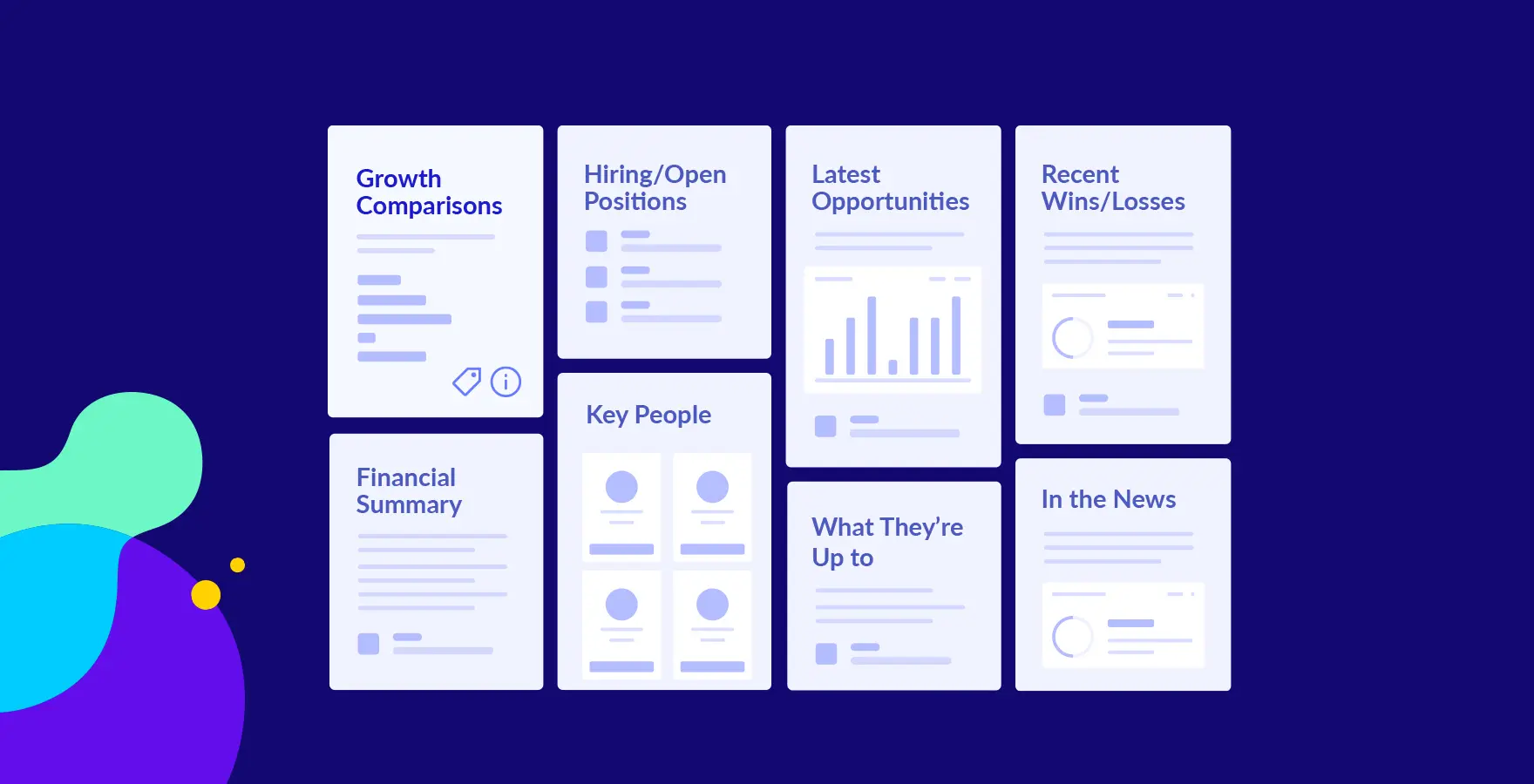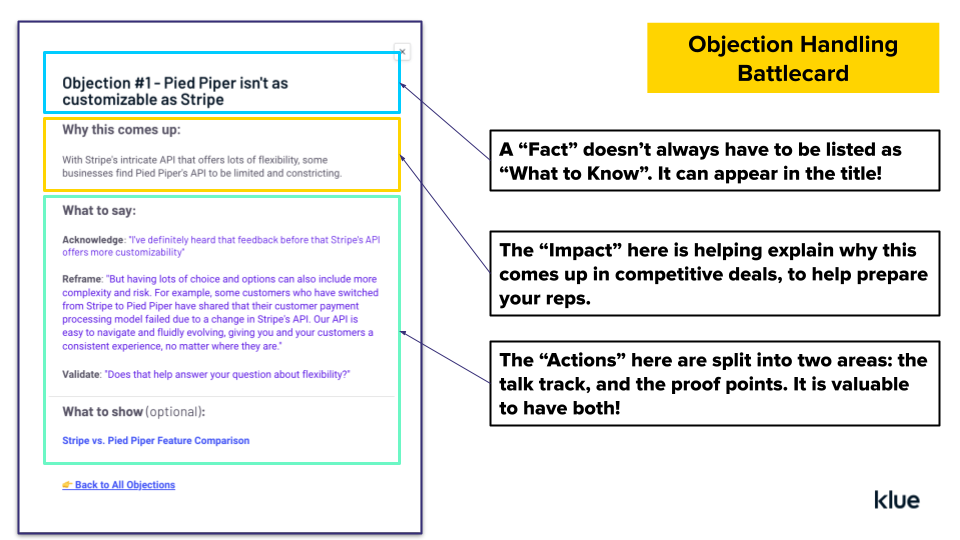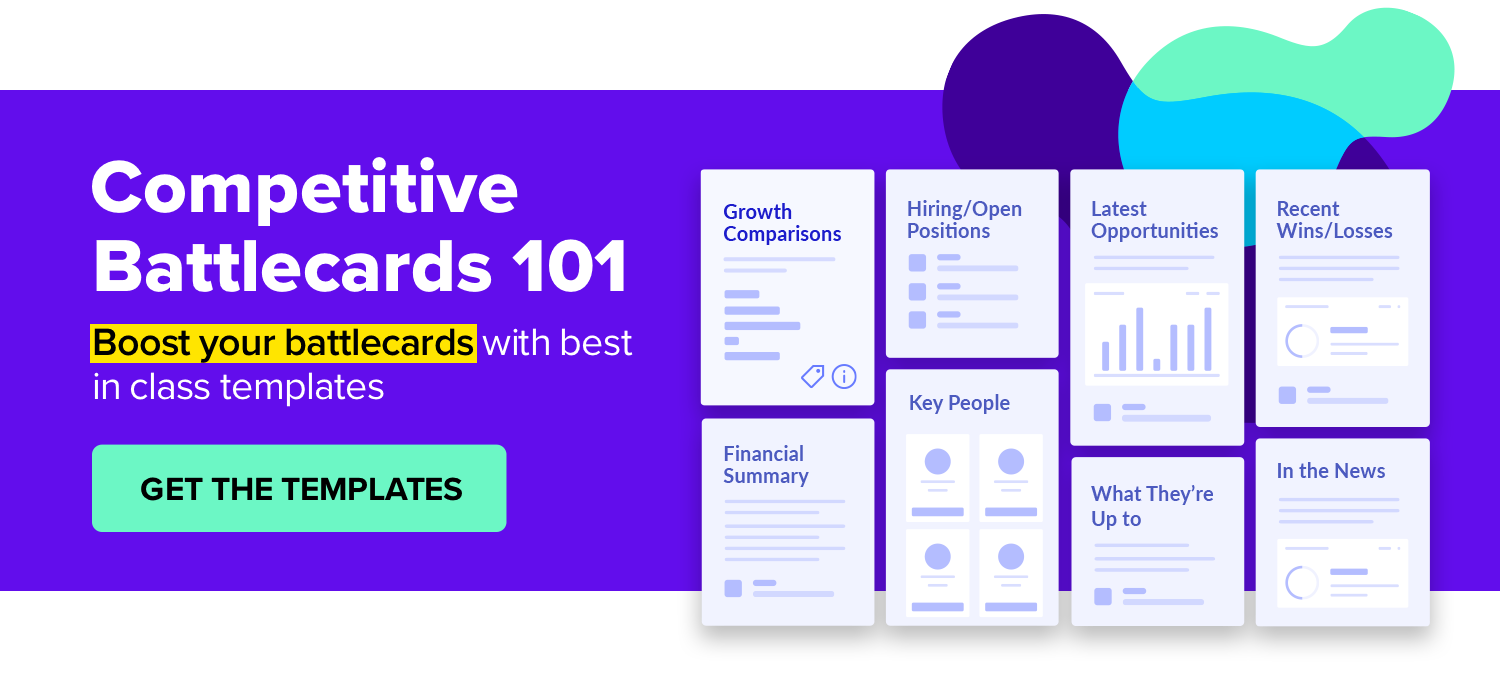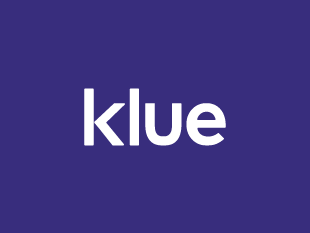Klue Compete
The Competitive Enablement Platform
Learn More
EVent | JUNE 20
Klue QUARTERLY SUMMER 2024
REGISTER NOW

Sales battlecard templates are tricking you.
Google ‘sales battlecards’ (also known as competitive battlecards, or just battlecards) and you’ll get slick-looking Word docs, PDFs and PowerPoint decks.
They have nicely formatted little boxes with preset headings just begging to be filled with your competitive content.
Reality check: This does not improve your battlecards. All it does is encourage you to fill the space.
Sales battlecards shouldn’t be “filled up”. They should contain the absolute minimum amount of content needed to enable your sales team to convert a prospect into a client. Period.
In this article, we’ll dive into how to build a sales battlecard that your reps can’t live without, and provide examples and templates so that you can start creating battlecards yourself.
Short on time and looking for some competitive battlecard templates to use? Grab them here.


A sales battlecard is a document that enables your sellers with key information about a competitor’s products, tactics, and services so that they can compete in deals more effectively. A battlecard typically includes advantages and disadvantages, market positioning, why we win and why we lose, and objections that sales reps may encounter.
Building your first sales battlecard can feel daunting.
There’s a blank canvas staring you in the face and pressure to fill it. In the first episode of our Competitive Battlecards Mini Course, David Washer, Director of Data Operations at Klue, shared a few critical steps to get started effectively before you start filling your battlecards with a list of facts and bullet points.
Alright, enough of the theory, let’s see what a competitive battlecard should look like in action! Here are two hypothetical examples of Pied Piper competing with Stripe.
The first battlecard example we’ll look at is a ‘Why we Win’ card. As you can see in the example below, the battlecard is structured into three categories for your sellers:


This is what we call the Fact, Impact, Act framework, and recommend using this structure within all of your battlecards. It guides your sales reps to use the competitive insight effectively in deals, but is flexible enough for you to adjust the content and recommended actions within different battlecards.
If you’re looking to figure out how to source content for a ‘Why we Win’ battlecard, start by interviewing the sellers that won the last ten deals against a specific competitor and reviewing deal notes or insights from your win-loss analysis.
The second battlecard example we’re looking at is ‘objection handling’. When built correctly, this can be one of the most popular cards amongst sellers that keeps them coming back for more.
As you can see in the example below, we’re still using the fact, impact, act framework. However, given the context of this battlecard is a little different, so to is the information you provide for sellers.


In this example, you can see that the fact is introduced in the title of the card itself. Then the impact section explains why the objection a seller is facing often comes up so that your reps can prepare accordingly.
The act section of an objection handling battlecard is where things get fun as you have plenty of resources at your disposal to arm your sales reps. As always, there are the talk tracks a seller can use and pending on the validity of the objection, you can enable your reps to address, reframe, or redirect the objection.
When handling an objection your sellers also need proof points to show their buyers that they’re not full of hot air and empty promises. These proof points can be one-pagers, customer quotes and case studies, or feature comparisons (like the example above).
Pro-tip: Nothing beats proven talk tracks that have already worked in the field. When building an objection handling battlecard, embed Gong snippets of your sellers nailing how to handle a competitor’s objection. The visual element makes your cards more engaging and allows your reps to learn from their peers at scale.
In a world where content is king (or queen) when it comes to competitive intelligence, it’s the most valuable and meaningful content that moves the needle.
To provide an alternative to the over-formatted competitive battlecard templates out there, we’ve started a series called Competitive Battlecards 101.
Rather than using a single template for all of your competitors, we want to give you the tools to understand each of the individual cards that can be used to build a full and effective battlecard.
Each article gives you one new competitive card to add to your arsenal, diving into the strategy behind each individual card that makes up the full deck you see above.
The articles will be short and sweet. No fluff. Just the facts on what the card is, how to build it, and when and why to use it.
You can check out all of the battlecards in our library to date by following the links below:




Competitive Enablement
Product marketers conducting competitive research are drowning in reviews, reports, and messy notes. Here's how Klue's AI foundation will help you complete this analysis in seconds, not weeks.


Competitive Enablement
The topic of Large Language Models (LLMs) has a lot of confusion. Here's what you need to know about how Klue is working with them.


Let’s do it. Tell us a bit about yourself and we’ll set up a time to wow you.
Let's do it. Tell us a bit about yourself and we'll set up a time to wow you.
XLet's do it. Tell us a bit about yourself and we'll set up a time to wow you.
XSubscribe to get our latest AI functionality and news in your inbox.
XOur Buyer Pulse feature, set to launch in Q2 2024, offers valuable insights into the factors influencing buyer decisions in your pipeline. By signing up for the waitlist, we can better gauge interest and proactively engage with you to streamline the setup and integration process before the feature becomes widely available.
X